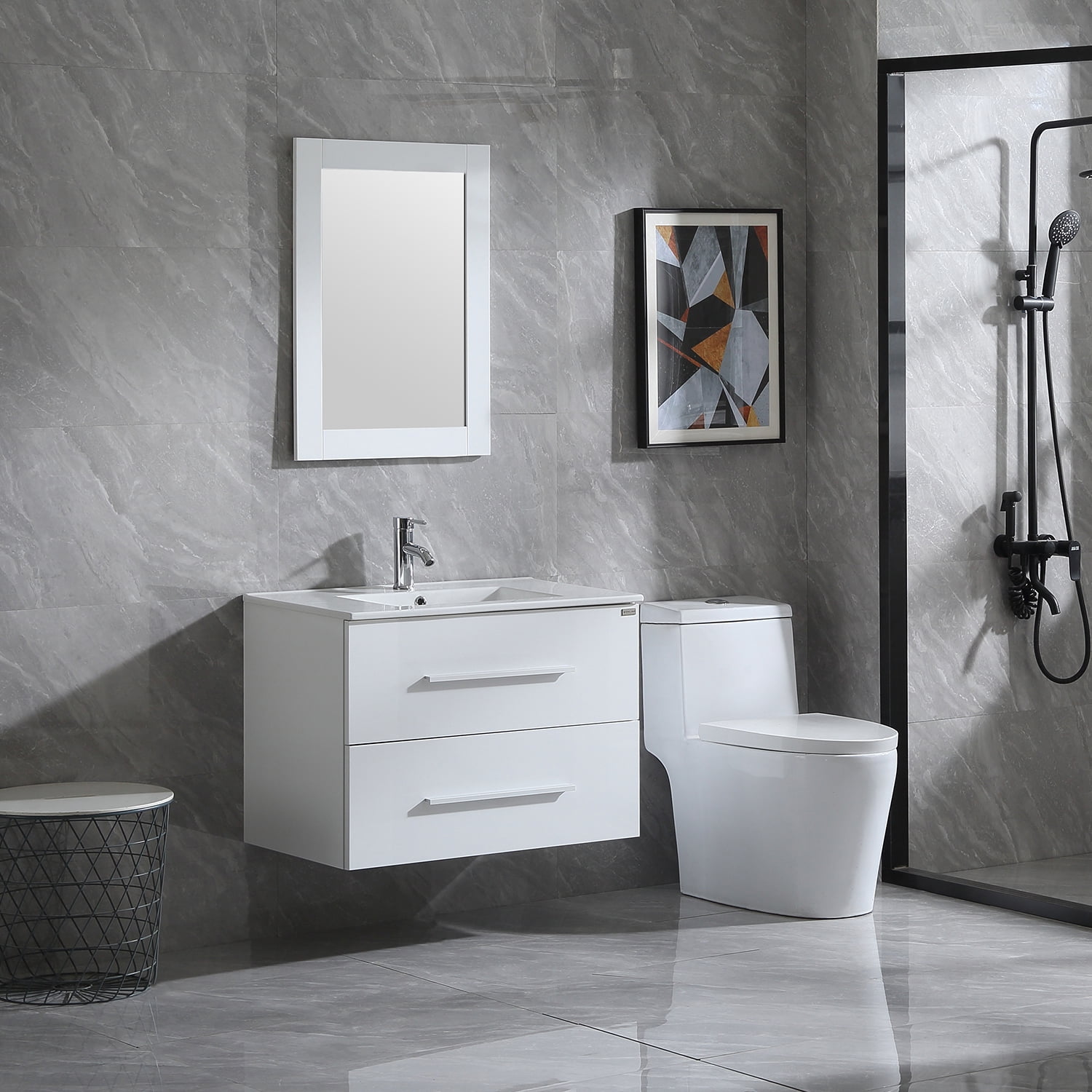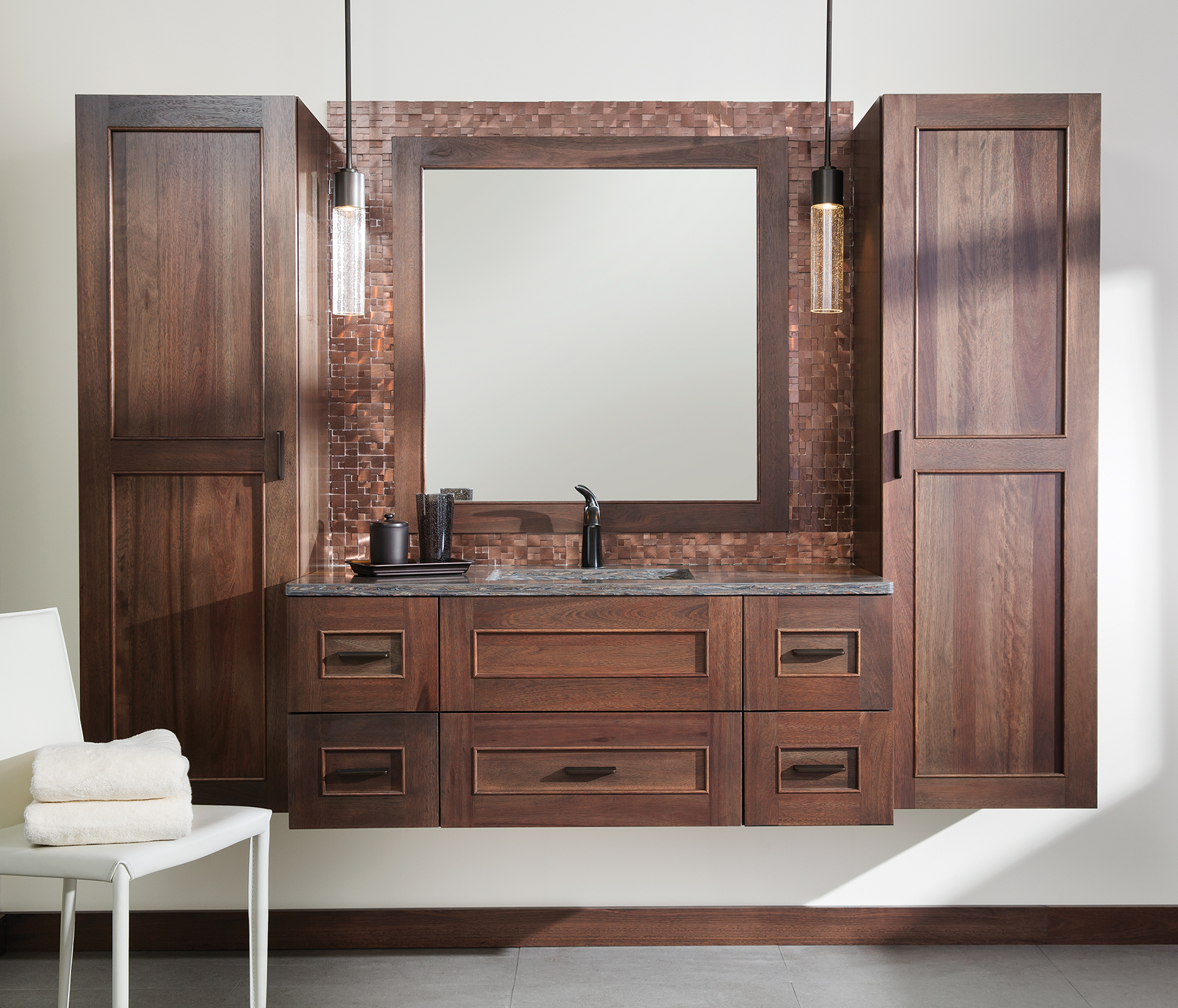Floating Bathroom Vanity Cabinet

A floating bathroom vanity cabinet is a stylish and functional storage solution that is suspended from the wall, giving the illusion of floating. These cabinets offer a modern and minimalist aesthetic, creating a spacious and airy feel in your bathroom. They are becoming increasingly popular as a contemporary alternative to traditional vanity cabinets that sit on the floor.
Types of Floating Vanity Cabinets
Floating vanity cabinets come in various styles, materials, and sizes to suit different bathroom designs and preferences.
- Material: Floating vanity cabinets are typically made from materials like wood, acrylic, or laminate. Wooden cabinets provide a classic and warm look, while acrylic cabinets offer a sleek and modern aesthetic. Laminate cabinets are durable and affordable, making them a popular choice for budget-conscious homeowners.
- Style: Floating vanity cabinets can be found in a wide range of styles, from traditional to modern. Some popular styles include farmhouse, contemporary, and minimalist. The style you choose should complement the overall design of your bathroom.
- Size: Floating vanity cabinets are available in various sizes, from small single-sink units to large double-sink units. The size you choose will depend on the space available in your bathroom and your storage needs.
Advantages of Floating Vanity Cabinets
Floating vanity cabinets offer several advantages over traditional vanity cabinets.
- Space-saving: By eliminating the need for legs, floating vanity cabinets create a sense of spaciousness, making smaller bathrooms feel larger. This is particularly beneficial in bathrooms with limited floor space.
- Easy Cleaning: The open space beneath a floating vanity cabinet makes cleaning the floor easier. You can easily sweep or mop under the cabinet, ensuring a clean and hygienic bathroom environment.
- Modern Aesthetic: Floating vanity cabinets have a modern and minimalist look that can enhance the overall design of your bathroom. They create a sleek and contemporary feel, making your bathroom look more stylish and sophisticated.
- Versatility: Floating vanity cabinets can be customized to suit your specific needs. You can choose different materials, finishes, and sizes to create a unique and personalized look for your bathroom.
Design Considerations for Floating Bathroom Vanity Cabinets

Floating bathroom vanity cabinets offer a contemporary and space-saving solution for modern bathrooms. However, choosing the right design elements can make a significant difference in the overall aesthetic appeal and functionality of your bathroom.
Color and Finish
The color and finish of a floating vanity cabinet play a crucial role in setting the tone and style of your bathroom. A white or light-colored vanity cabinet can create a clean and airy feel, while a darker shade can add a touch of sophistication.
- Consider the existing color scheme of your bathroom and choose a vanity cabinet that complements or contrasts with the walls, floors, and other fixtures.
- A high-gloss finish can reflect light and make the bathroom appear larger, while a matte finish provides a more subtle and understated look.
- Wood finishes, such as walnut or cherry, can add warmth and natural beauty to the bathroom, while metallic finishes, such as brushed nickel or chrome, can create a modern and industrial vibe.
Hardware
Hardware, such as cabinet knobs and pulls, can add a finishing touch to the floating vanity cabinet.
- Choose hardware that complements the style and finish of the vanity cabinet and other bathroom fixtures.
- Consider the size and shape of the hardware, as well as the material, such as metal, ceramic, or glass.
- For a minimalist look, opt for simple and sleek hardware. For a more traditional style, choose ornate and decorative hardware.
Size and Shape, Floating bathroom vanity cabinet
The size and shape of the floating vanity cabinet should be carefully considered to ensure a perfect fit in your bathroom space.
- Measure the available space carefully before purchasing a vanity cabinet. Consider the width, depth, and height of the vanity cabinet and make sure it leaves enough room for movement around the sink.
- For smaller bathrooms, a narrow and shallow vanity cabinet can help to maximize space. For larger bathrooms, a wider and deeper vanity cabinet can provide ample storage space.
- The shape of the vanity cabinet can also influence the overall aesthetic of the bathroom. A rectangular vanity cabinet is a classic and versatile choice, while a curved or rounded vanity cabinet can add a touch of elegance.
Integration with Bathroom Design
To seamlessly integrate a floating vanity cabinet into the overall bathroom design, consider the following:
- Choose a vanity cabinet that complements the style of your bathroom. For a modern bathroom, a sleek and minimalist vanity cabinet would be a good choice. For a traditional bathroom, a more ornate and detailed vanity cabinet would be more suitable.
- Consider the lighting in your bathroom. A floating vanity cabinet can be illuminated with under-cabinet lighting, which can create a warm and inviting atmosphere.
- Add decorative elements, such as a mirror, artwork, or plants, to complement the vanity cabinet and create a cohesive design.
Installation and Maintenance of Floating Bathroom Vanity Cabinets

Floating bathroom vanity cabinets offer a sleek and modern aesthetic, but their installation and maintenance require careful attention to detail. Proper installation ensures stability and longevity, while regular maintenance keeps the vanity looking its best.
Installation Process
Installing a floating bathroom vanity cabinet involves a few steps, ensuring a secure and level installation.
- Step 1: Determine the Location and Mark the Wall. Choose a location that is free from obstructions and has adequate space for the vanity and surrounding fixtures. Use a level to mark the wall at the desired height of the vanity.
- Step 2: Locate and Mark the Stud. Find the wall stud using a stud finder or by tapping on the wall to listen for solid sounds. Mark the location of the stud on the wall with a pencil.
- Step 3: Install the Mounting Brackets. Attach the mounting brackets to the wall, aligning them with the marked stud location. Use appropriate screws or anchors to secure the brackets to the wall. Make sure the brackets are level and securely attached.
- Step 4: Attach the Vanity to the Brackets. Carefully lift the vanity cabinet into position and align it with the mounting brackets. Attach the vanity to the brackets using the provided hardware, ensuring that it is level and securely attached.
- Step 5: Install the Sink and Faucet. Install the sink and faucet according to the manufacturer’s instructions. Make sure the connections are secure and leak-free.
- Step 6: Install the Hardware. Install any additional hardware, such as cabinet doors, drawers, or shelves. Make sure all hardware is securely attached and functioning properly.
Ensuring Proper Installation and Stability
The stability of a floating bathroom vanity cabinet depends on several factors:
- Secure Wall Attachment. The vanity cabinet must be securely attached to the wall using strong brackets and appropriate hardware. Use screws that are long enough to penetrate the wall stud for maximum stability.
- Level Installation. The vanity cabinet must be level to ensure stability and prevent uneven weight distribution. Use a level to check the levelness of the cabinet during installation and make adjustments as needed.
- Weight Distribution. Distribute the weight of the vanity cabinet evenly across the mounting brackets. Avoid overloading the vanity with heavy items.
Maintenance Practices
Maintaining a floating bathroom vanity cabinet is essential for its longevity and functionality:
- Regular Cleaning. Clean the vanity cabinet regularly using a mild detergent and a soft cloth. Avoid using harsh chemicals or abrasive cleaners that can damage the finish.
- Prevent Water Damage. Immediately wipe up any spills or splashes to prevent water damage. Ensure that the faucet is properly sealed to prevent leaks.
- Inspect Hardware. Regularly inspect the hardware, such as hinges, drawers, and handles, for any signs of wear or damage. Replace or repair any damaged hardware promptly.
- Avoid Overloading. Avoid overloading the vanity cabinet with heavy items. This can strain the mounting brackets and cause the vanity to become unstable.
A floating bathroom vanity cabinet can be a stylish and space-saving addition to any bathroom, especially in smaller spaces. If you’re looking for a new place to install one, consider exploring the options for 2 bedroom apartments in Lawrence, MA.
These apartments often have modern bathrooms, making them ideal for showcasing a sleek floating vanity cabinet.
Floating bathroom vanity cabinets offer a sleek and modern aesthetic, creating a sense of spaciousness. When paired with espresso cabinets, the contrast in color can be striking, making the vanity a focal point. To ensure a harmonious look, consider the bathroom paint colors with espresso cabinets to complement the overall design.
Choosing a color palette that complements both the vanity and the cabinets will enhance the visual appeal of the space.
